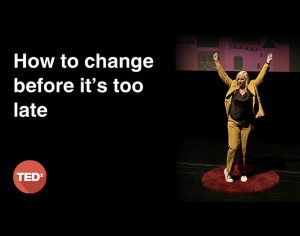Joanna Swash waxes lyrical about the importance of creating a thriving office environment.
Because of the pandemic, the future of the traditional office has been seriously threatened. The new normal is about embracing one of a number of different options, such as working from home or returning to the office full time or perhaps a hybrid format somewhere in between. Yet we should never lose sight of what a great office environment can bring to the table.
If people are central to all businesses, then we must put their needs at the centre of everything we do. As such, we are social creatures. We yearn to feel connected and value human interaction. We crave real conversations and the bonds that are impossible to form remotely ‘ no matter how much video-calling is involved.
Don’t get me wrong, it is not impossible to foster these interactions and relationships while working remotely, but it is certainly more difficult. Maximum effort is required from both sides to make it work. Sometimes it does, sometimes it doesn’t. I can say, with certainty, that it is far easier to fulfil the humanity of business when physically working in the office. If business agility is an ever-increasingly critical tool for achieving commercial success, then innovation, collaboration, trust and empathy runs smoothly alongside it.
Why we need the office
Advances in technology have liberated us. Our phones, and even our watches, update us regularly. We can snuggly fit workstations into lightweight satchels. Even if you love your job, it is probably not healthy to work every waking hour. There are times to switch-off and be kind to ourselves.
Offices provide a physical designated space in which to work. They keep our home separate from our work life. It allows us to physically leave our work space at the end of the day. A well-rested mind is imperative for creativity, innovation and wellbeing.
Offices make it easier to benefit from the culture of your workplace. And culture is linked to wellbeing, productivity and business performance. Having your team all together in one place allows senior members to not only monitor the welfare of all their employees, but also work together to share knowledge, solve issues and make decisions.
Offices help to build human connections, whether simply taking part in small talk or when discussing a key business strategy. And, as a leader, I am not suggesting we return to the office so that bosses can keep one eye on their employees. My reasons are not connected with ‘Big Brother’ watching over you.
It simply allows me to be available to support the team. We need to relate to other people because it gives us all a sense of community, and of belonging. Technology, for all of its great benefits, cannot provide this community if we work remotely most of the time. Offices should be inspiring places to work. Not only equipped with the correct tech and furniture, but designed for creativity, fun, collaboration and teamwork.
The future of the office
We’ve all seen pictures of Google‘s headquarters, decked out with slides and sleep pods. They’re amazing. As adults we spend over half of our lives at the office, so making work a welcoming place for staff is important. But it is more than just about fun, it is also about culture.
At its core is employee wellbeing. Not just because it is clearly linked to productivity and creativity, but because it is the way businesses should be run. It is all about people. Employ the right people, trust them, empower them and they will do great things for the business.
A safe, welcoming place in which to work will encourage employees to flourish. Think of it as a second home. Create snug breakout areas, and provide coffee tables that wouldn’t be out of place at home. Gone are the harsh overhead lights and standard grey-coloured conference tables.
Use space creatively. There will need to be a mix of workstations, meeting rooms and relaxation areas. These are spaces which support all types of working, promoting both collaboration as well as independence. Think about going vertical, such as a treehouse office? Office space should be flexible and is there room for future expansion and development?
The future is unpredictable, so create space that can be remodelled quickly and smoothly. It needs to be multi-functional. Can a central coffee shop and surrounding area be cleared to host a spontaneous conference? It’s all about improvisation.
Your office can be a tool for attracting new employees. Be bold, be cool and be impressive. Those first few moments, when a potential new employee arrives at your premises, is so important. First impressions count. Create an environment where people want to work. Attract like-minded people and then retain them through the power of the office.
That said, given recent events, it is imperative to consider the relevant health and safety measures. This applies to existing staff members as well as any visitors. Rethink your office layouts, and keep social distancing in mind. Constantly review ventilation and cleaning procedures.
Long love the office
Although technology has been crucial in maintaining relationships during the pandemic, the office remains alive and kicking. Create a space where employees want to work. Things may look a little different and may have to be re-configured so that it stays flexible. But it is still a hub where employees can connect, debate, collaborate and develop. And perhaps we will all appreciate the office just a little bit more in the future, having experienced life on the other side during the past couple of years.
“
Share via:


















































